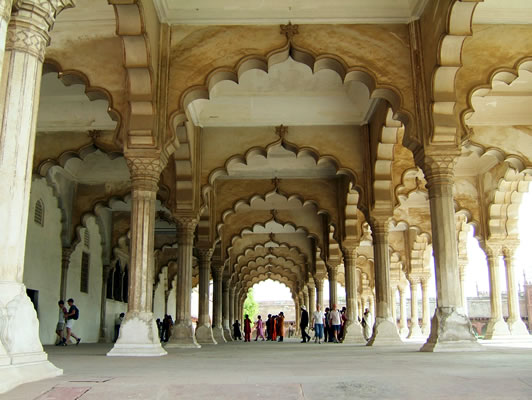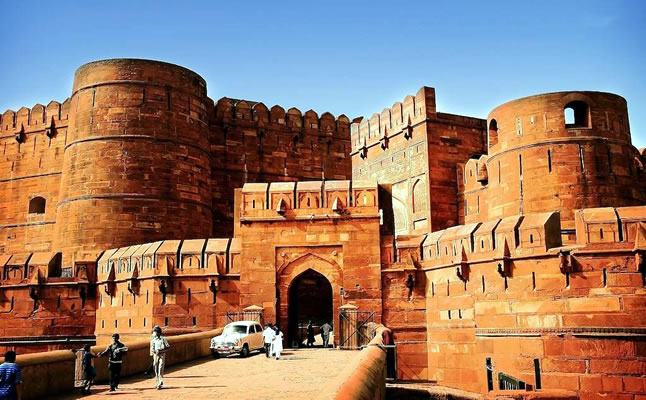THE BENGALI-MAHAL
(1565-1569 A.D.)
Hindi Version |
|
[Not a valid template]The Bengali-Mahal was a vast palace which originally extended from the south-eastern tower called Bengali-Burj to the Machchhi-Bhawan. It overlooked the river Jamuna which provided a pleasant landscape, fresh air and constant supply of water. It was built by Akbar and has named as such owing to Bangladar (curved) chhajjas and roofs of its buildings. Underground apartments in two storeys are situated beneath this palace. Shahjehan built his white marble palaces on its northern part. [Not a valid template]The remaining portion is, at present, split into two palaces: Akbari-Mahal and Jahangiri-Mahal. The former has a spacious court which had mansions around it. Only the river-side apartments have now survived. There were smaller courts and complexes, toilets service quarters and a large Baoli (setp-well) with a well. The East India Company first used it as provost-Sargeants quarters and then as a prison. The later palace also has a large central court with assembly halls and living rooms around it. Most of these were in ruins and were restored by John Marshall between 1902-1911. [Not a valid template] The palace is entirely built of red sandstone, construction is tradeated with emphatic use of designed brackets supporting the chhajjas as well as lintels. Flat ceilings have been used in a wide variety even on large assembly halls ingemiously. Some ladaodar ceilings built of stone ribs and panels are unique glazed-tiling and stucco have been used alongwith stone carving for ornamentation. Designs are indigenous as well as exotic. The whole composition is unitary and harmonious. This happly trend is reflective of the composite culture which developed under the Mughals. Akbar’s Harem was housed in this palace historian Abul Fazal recorded that Akbar "made a large enclosure with fine buildings inside, where hereposes. [Not a valid template]Though there are more than 5000 women. He was given each a separate aparptment." It was a sensitive matter and called for efficient organization. Chaste women and trustworthy officers were appointed in the service of the Harem. It was carefully guarded. Women were paid monthly salaries ranging from rupees 1028 to 1610 maid-servants were kept in large numbers for cleaning, lighting and other duties of the household. They received salaries from rupees 2 to 51. All this was well organized and kept in perfect order. |




